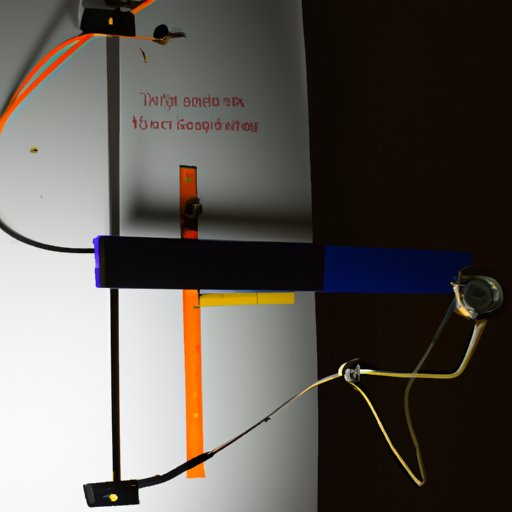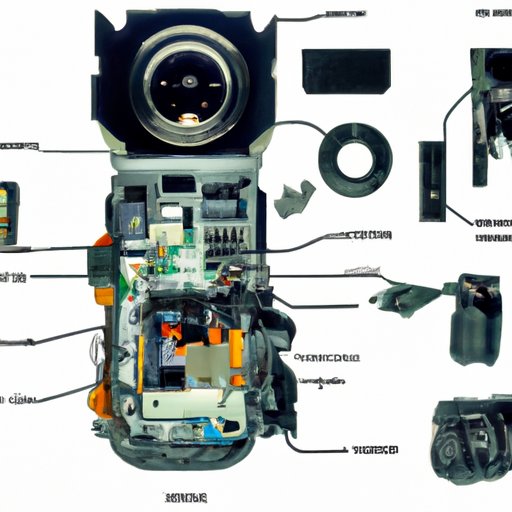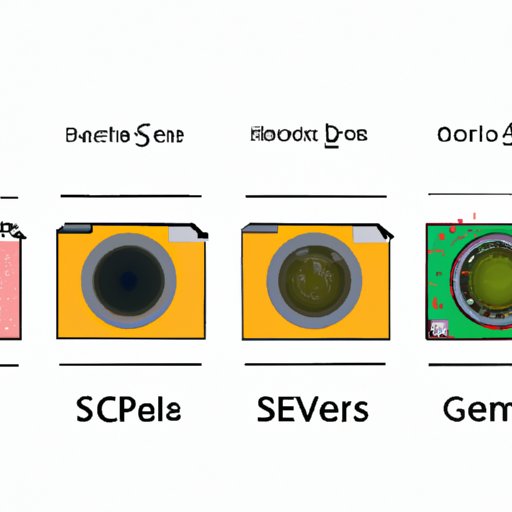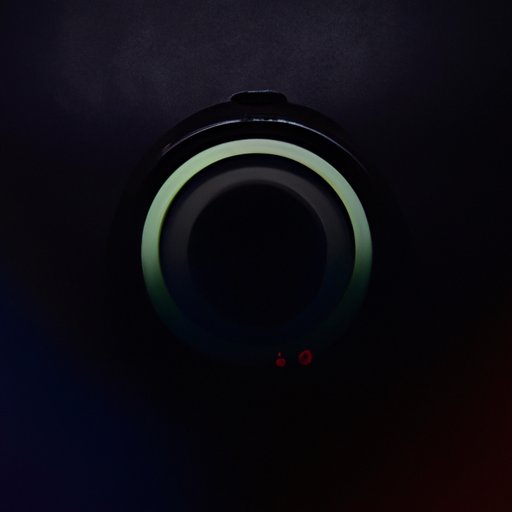Introduction
Cameras are everywhere these days, and they’re an essential tool for capturing memories and moments. But how does a camera work? Cameras capture light and transform it into an image, but there’s more science and technology involved than you might think. In this article, we’ll explore the science behind camera technology and how cameras work.
What is a Camera?
A camera is a device used to capture still or moving images. The word “camera” comes from the Latin term “camera obscura,” which translates to “dark chamber.” This refers to the darkened room in which early cameras were placed to capture images. Modern cameras, however, are much more sophisticated and can be used to take photos or videos.
How Does a Camera Work?
At its most basic level, a camera works by capturing light and transforming it into an image. Light enters the camera lens and is focused onto a light-sensitive material, such as film or a digital sensor. This material captures the light, creating an image that can then be viewed or stored.

Exploring the Physics of How Cameras Work
To understand how cameras work, it’s important to know the basics of optics and light. Light is made up of particles called photons, which travel in waves. The size of the wave determines the color of the light. When light hits an object, some of the light is absorbed and some is reflected back.
Light and Optics
When light passes through the camera lens, it is bent and refracted, allowing the camera to focus on the subject. The lens is made up of several curved elements that bend and shape the light as it passes through. This process is known as refraction, and it helps the camera to capture sharp, clear images.
Reflection and Focusing
The lens also helps to focus the light. This is done with a series of curved mirrors that reflect the light and direct it toward the film or sensor. The camera’s autofocus system uses sensors to detect the distance between the camera and the subject, and adjusts the lens accordingly.
Shutter Speed
The shutter speed is the amount of time that the camera’s shutter stays open. A slower shutter speed allows more light to enter the camera, resulting in a brighter image. A faster shutter speed reduces the amount of light entering the camera, resulting in a darker image.

A Detailed Breakdown of Camera Components
Now that we’ve explored the physics of how cameras work, let’s take a closer look at the components of a camera. Each component plays an important role in capturing images.
Lens
The lens is the most important part of the camera. It collects light and focuses it onto the film or sensor. Lenses come in various sizes and types, and each one has its own unique characteristics. For example, wide-angle lenses capture a wider field of view, while telephoto lenses allow you to zoom in on distant objects.
Shutter
The shutter is a mechanism that opens and closes to control the amount of light entering the camera. It is typically made up of two metal plates that open and close quickly, allowing just the right amount of light to reach the film or sensor.
Film or Sensor
The film or sensor is the light-sensitive material that captures the image. Film is made up of tiny grains of silver halide, while digital sensors are made up of millions of tiny pixels. Both capture the light and create an image that can be viewed or stored.
Viewfinder
The viewfinder is the device used to frame and compose the image. It displays what the camera sees, allowing the photographer to adjust the composition and exposure of the image before taking the shot. On digital cameras, the viewfinder may be an LCD screen or an electronic viewfinder.
An Overview of Camera Technology Through the Ages
Camera technology has changed significantly over the years. Early cameras used film to capture images, while modern digital cameras use digital sensors. Let’s take a look at how camera technology has evolved.
Early Cameras
Early cameras used a chemical process to capture images on film. Light would enter the camera and expose the film, which was then developed using a chemical process to create the image. This process was slow and labor-intensive, but it allowed photographers to capture images that could be printed and displayed.
Digital SLRs
Digital single-lens reflex (DSLR) cameras are now the most popular type of camera. They use a digital sensor to capture images, which can then be viewed and edited on a computer. DSLRs offer more control over the image, including the ability to change lenses and adjust settings like aperture, ISO, and shutter speed.

The Evolution of Camera Sensors and Image Quality
As camera technology has evolved, so too have camera sensors and image quality. Digital sensors have become more efficient and capable of capturing higher-quality images. Let’s take a look at some of the key features.
Resolution
Resolution is the number of pixels in an image. Higher resolution images have more detail and clarity, while lower resolution images appear blurrier. Modern digital cameras have high resolution sensors that can capture detailed images.
Dynamic Range
Dynamic range is the difference between the darkest and brightest parts of an image. A camera with a high dynamic range can capture images with more detail in shadows and highlights. Digital cameras have improved dynamic range and can capture images with greater contrast and detail.
Color Depth
Color depth is the number of colors a camera can capture. A camera with a high color depth will produce images with more accurate colors and less noise. Modern digital cameras have high color depth sensors that can capture vibrant, lifelike images.
How Digital Photography Changed the Way We Capture Images
Digital photography has revolutionized the way we capture images. Digital cameras are smaller, lighter, and more versatile than traditional film cameras. They also offer more control over the image, making it easier to get the perfect shot. Digital cameras also allow photographers to edit their images after they’ve been taken.
Automation
Digital cameras offer automation features that make it easier for photographers to get the perfect shot. Autofocus systems automatically adjust the focus of the lens, while autoexposure systems automatically set the aperture and shutter speed. Automatic white balance systems ensure accurate colors in all lighting conditions.
Post-Processing
Digital cameras also allow photographers to edit their images after they’ve been taken. This post-processing step is essential for creating professional-looking images. Photographers can use photo editing software to adjust colors, contrast, and other aspects of the image.
Conclusion
Cameras are incredible tools for capturing images. But how does a camera work? We’ve explored the science behind camera technology, from the physics of light and optics to the evolution of digital photography. We’ve also looked at the components of a camera, from lenses to sensors, and how digital photography changed the way we capture images.
From early cameras to modern digital SLRs, camera technology has come a long way. With advances in optics, sensors, and image processing, today’s cameras are more powerful and capable than ever before. Whether you’re a professional photographer or a casual hobbyist, cameras are a great way to capture and preserve memories.
(Note: Is this article not meeting your expectations? Do you have knowledge or insights to share? Unlock new opportunities and expand your reach by joining our authors team. Click Registration to join us and share your expertise with our readers.)
